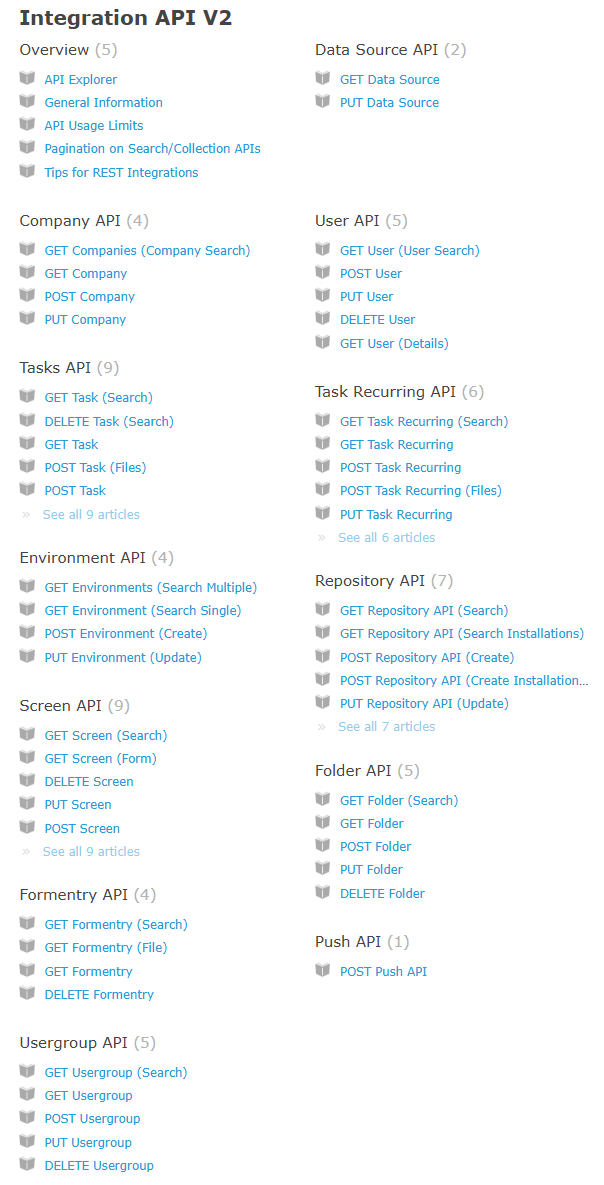Integration API
The Application Programming Interface (API) allows for programmatic access to data hosted on the platform.
The API Explorer
This details documentation on each API endpoint and option. We’ve exposed our current version 2 API endpoints in an easy to understand visual format. Browse each available endpoint and its supported HTTP verbs, view the model properties and even test out calls to the API in the API Explorer. It's an integrator's dream and we think it should make API integration projects much easier to implement.
It supports JSON and XML formats over a RESTful interface. While the primary focus of the Explorer is in JSON format requests and responses, there are areas where you can specify an XML response type to get an idea of what the API requires and responds with on the XML side too.
The API Explorer is a dynamic, living document of our API and is generated directly from our API code, thus allowing you to have confidence that what you see in the Explorer is exactly what is supported and available right now on the API.
Each available API endpoint is outlined in the Explorer, with Model and Model Schema tabs/links which reveal the structures involved in requests and responses.
The Model tab/option on each endpoint, in particular, provides detailed descriptions of the various field definitions and structure relationships.
As a rule, the /search endpoints on the main API entities provide the most amount of detail for the common structures of that entity.
Contact us here to get access to the API documentation (you'll require a login to the web platform), and for any integration support needs. We also offer a consultancy service where we can undertake the integration for you. This is quoted on an individual job basis.  |
Possible Uses
- Sending a pre-populated form from your online system.
- Collecting completed form entries from your database.
- Sending and receiving tasks to an external hub.
The API opens up many different options that may not be possible using Connectors. However, it's an advanced topic and requires some programming knowledge. An easier way for non-programmers to integrate is using connectors
Further Reading
This document outlines the API and is intended for software developers and systems integrators.
